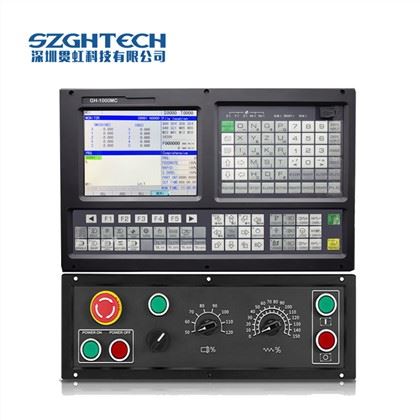4 Axis Lathe and Turning CNC controller with new control panel ARM+DSP+FPGA usb cnc complete kit
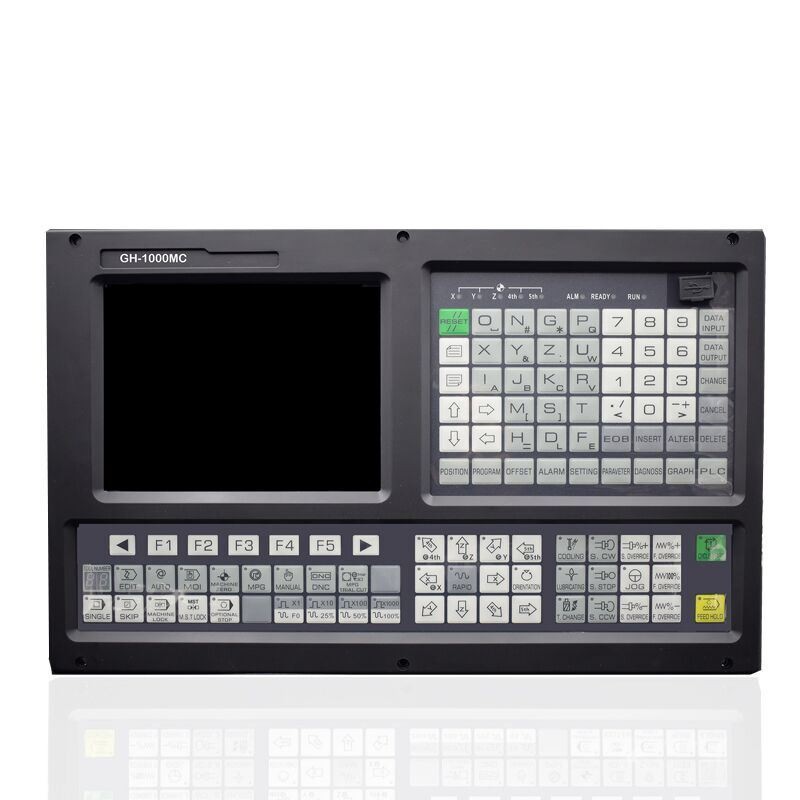
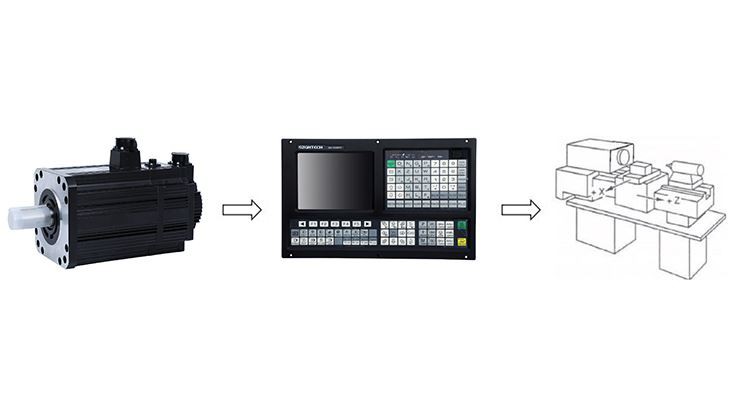
Number of control axes | 4axes (X, Y, Z, A) |
Minimum programming | 0.001mm |
Maximum programming | ± 99999.999mm |
Top speed | 30m / min |
Feed speed | 0.001-15m / min |
Manual continuous | One axis or simultaneous multi-axis |
Interpolation method | Straight line, arc, thread interpolation |
Tool offset | Length compensation, nose radius C compensation |
Spindle functions | Gear, dual analog control, rigid tapping |
Handwheel functions | Panel type, plug-in hand-held |
Screen saver function | Screen saver function |
Communication function | RS232, U disk interface |
Compensation function | Knife compensation, between compensation, screw compensation, radius compensation |
Program editing | Male / English, relative / absolute programming |
Limit function | Software limit, hardware limit |
Pre-reading function | Short line preprocessing 10,000 lines |
Password protection | Multi-level password protection |
Input and output | I / O point 24X24 |
PLC programming | The user is free to design PLC function |
Acceleration and deceleration control | Linear acceleration and deceleration, the number of additions and subtractions |
Encoder lines | Any setting |
User macro program | Yes |
Electronic gear functions | Yes |
Vice-panel | A-type panel with hand wheel; B band band switch |
Applicable machine tools | CNC Lathe & Turning Machinery and specially automatic equipment |
Control axis:
* Control axis: 3-5 axis (X, Y, Z,A,B)
* Interpolationaxis: Any 3 axis linear interpolation , any 2 axis circular interpolation
* Position command range:
Spindle axis functions:
* Two channels 0V ~ 10V analog voltage output, support double spindle control
* Spindle encoder: encoder lines can be set (100 p/r ~ 5000p/r)
* Encoder and spindle’s transmission ratio: (1 ~ 255):(1 ~ 255)
* Spindle ration: 50% ~ 120% eight stages real-time tunning in total
Tool functions:
* Tool length compensation
* Tool point radius compensation (C type)
* Two levels PLC programming, operation speed is 1.5μs/ step basic instruction; 4700 steps mostly, the cycle of the first level programming is 8ms.
* Support PLC warning and PLC alarm.
* Support multiply PLC programming (mostly 20), the current PLC programming can be chosen.
* 45 kinds of commands (10 kinds of basic commands, 35 kinds of function commands)
* I/O unit input/output: 32/32
Related products:
1.CNC Controller
2,Axis servo motor &driver
3.Spindle Servo Motor&driver
4,Rotary table
Application: CNC Lathe & Turning Machinery and specially automatic equipment
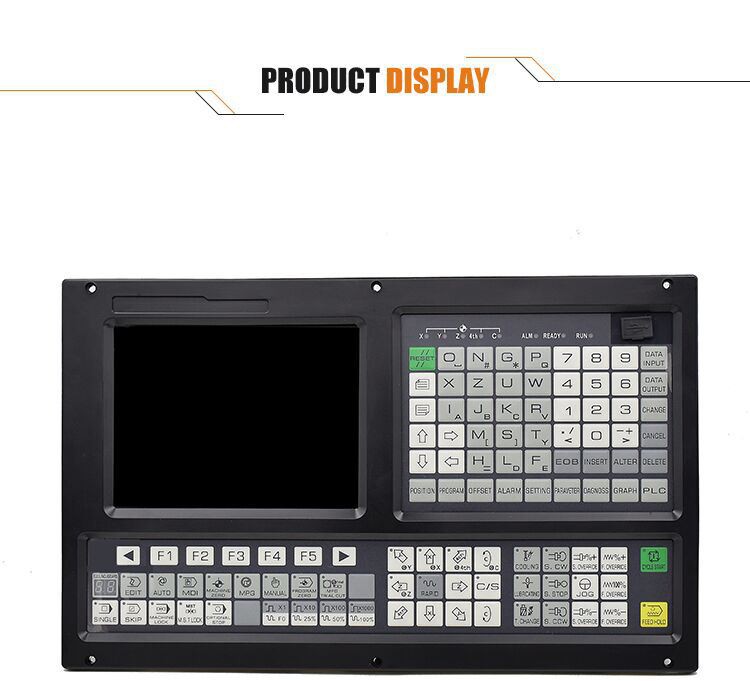


More Professional service in cnc system total products exporting field
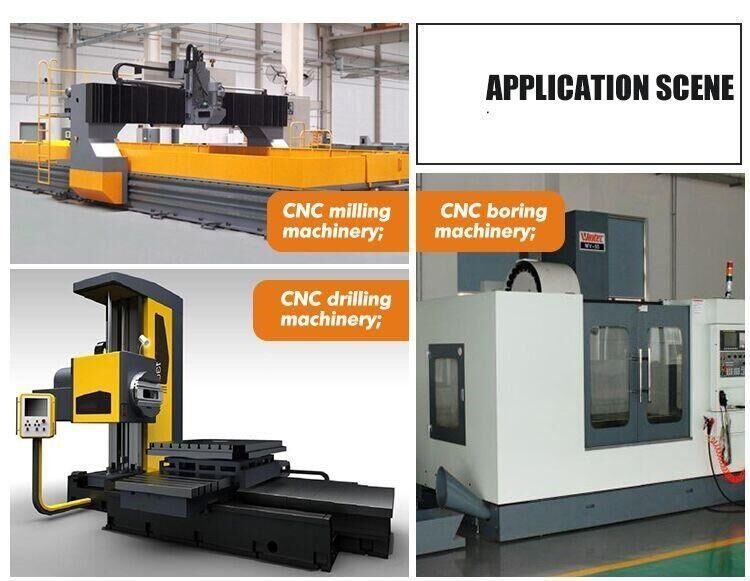
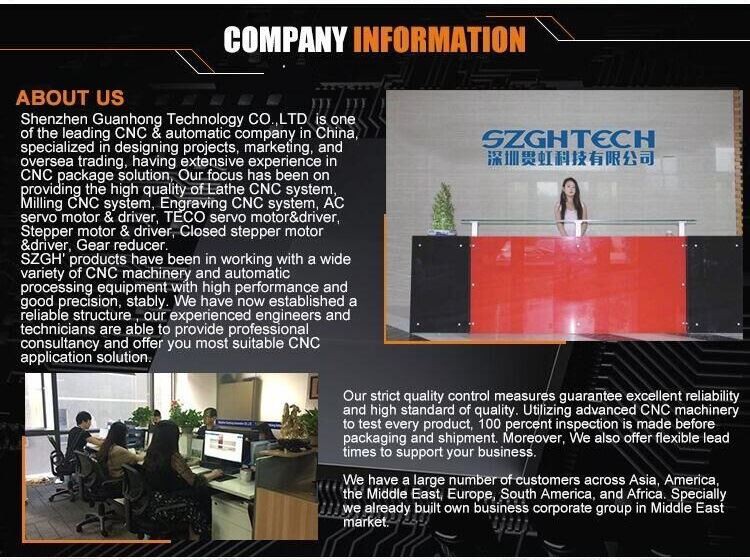
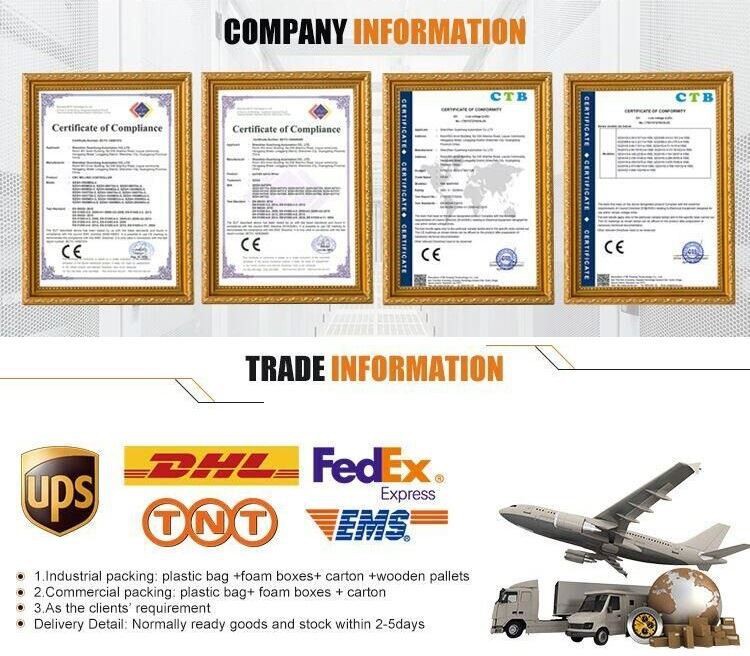
FAQ
Q: What’s your after-sale service?
A: Our quality warranty period is one year. Any quality problem will be solved to customer satisfactions.
Q: How can we get a quote?
A: Contact us with specification: such as power ,torque ,application,axis etc.
Q: What's the trade term and payment term?
A: Amount less than $1000, 100% paid before production, more than $1000 can be negotiated!
T/T, Western Union, PAYPAL etc.
If you have another question, pls feel free to contact us as below


